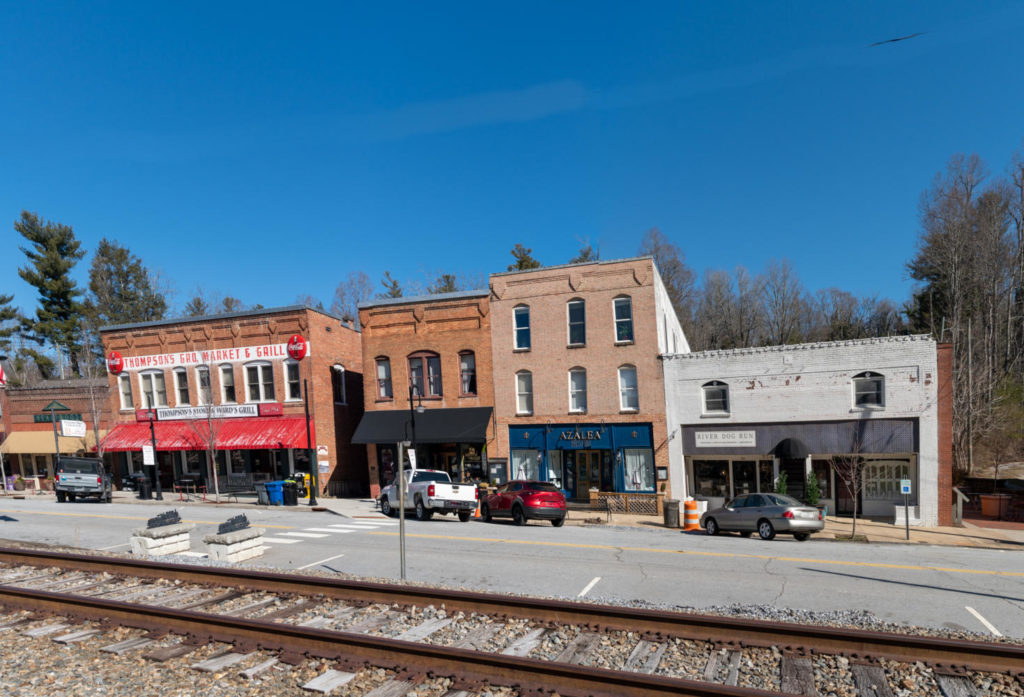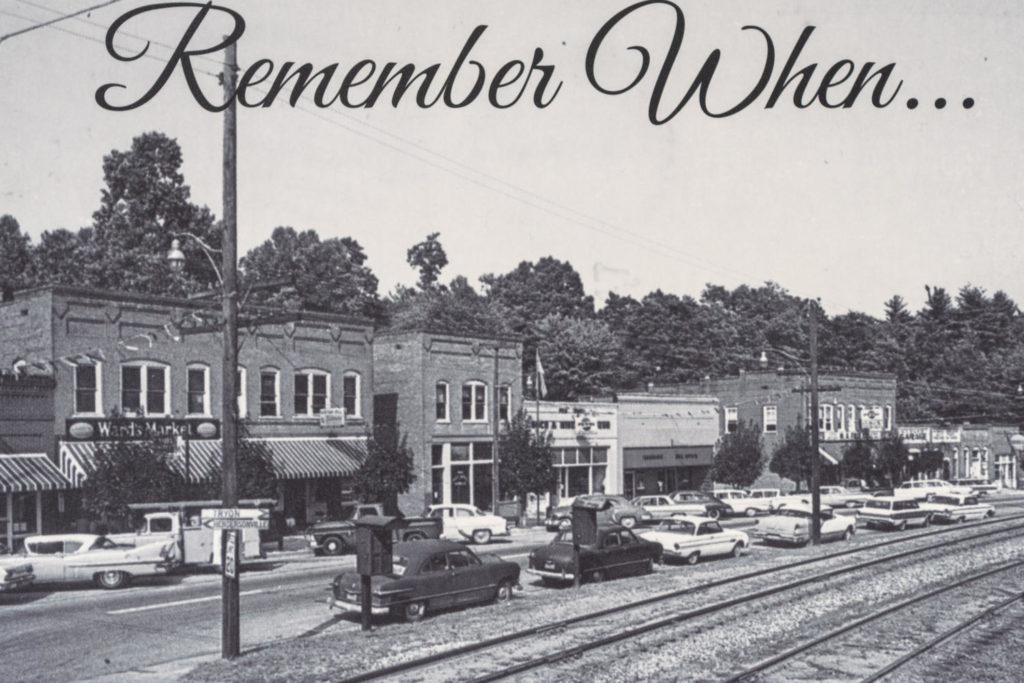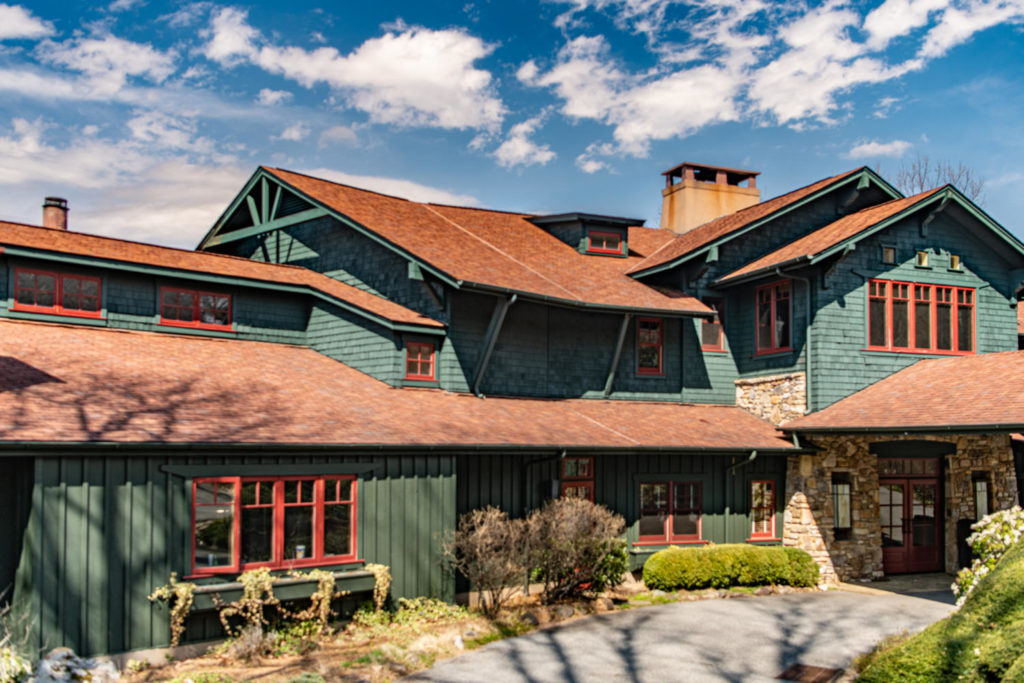
We started this series after realizing there are so many quaint towns and hardworking people that surround Asheville, representing the old fashion “Heart of America” we are all missing. Within these historic towns, you’ll find officials that want to preserve their history, hardworking farmers, farm-to-table restauranteurs, shopkeepers, artisans, and so much. Many of those truly care about preserving their town’s history and our food and water sources that have been compromised and not appreciated. After visiting the Historic Town of Saluda in February, we yearned to go back in warmer days to enjoy all of its natural beauty and to check out more of the local dining. To us, it truly represents the “Heart of America”!

History of Saluda
Take a few moments to listen to this YouTube that highlights some interviews with some of the old-timers in town. My favorite was the stories about hearing the railroad slowly coming into town at night…..”I think I can….I think I can…..I know I can” These interviews are woven together to tell the story of Saluda’s history, memorable people, and everyday life in “the good old days”. Here is the opening sequence shared from Historic Saluda’s website:
Long before the railroad cut through the steep gorge along the Pacolet River to Saluda, there was Pace’s Gap, named after the family who settled in the area in the early 1800s. Many of the original families were Scots-Irish, who left Pennsylvania around the time of the Whiskey Rebellion in the early 1790s. The town’s recognition was changed when Count Joseph Marie Gabriel St. Xavier de Choiseul, the French consul to Charleston, South Carolina, and cousin to Louis Philippe I of France, bought land in 1831 from the Barings of nearby Flat Rock and built his home, the Saluda Cottages. When the Spartanburg and Asheville Railroad’s first passenger train came chugging through town on July 4th, 1878, Pace’s Gap was forever changed.
The completion of the Southern Railroad in 1878 brought about significant growth to the town, chartered as the town of Saluda in 1881. The grade of the Saluda railroad is unmatched by any mainline east of the Rocky Mountains, with a grade that drops 600 feet (180 m) to the mile. This included 50 curves, some horseshoe, and saved money by going over rather than through the mountains. This section of railroad was built initially as the Asheville and Spartanburg Railroad. The railroad was built with convict labor, which marked the first such use on a large scale, supervised by Colonel Andrew Tanner. He operated the first hotel in Saluda and was elected the first mayor of Saluda in 1881. In 1887, eight-passenger trains passed through Saluda daily, with about 3,000 visitors a year. The Saluda Grade was infamous for runaway train accidents. In 1880 alone, fourteen men were killed on the 3-mile (5 km) stretch of track. The train no longer runs through Saluda, although there is talk of future passenger train plans.

Things to do in Historic Saluda
Saluda is a mountain oasis with a bustling downtown area filled with fabulous restaurants, unique and old fashion shops, a General Store, a vibrant art and music scene, and of course, a hub of outdoor activities. Shown below, we’ve highlighted some of our favorites.
Hiking
Biking
Entertainment
Town Walking Trails
- Saluda Walking Tour 1 of Early 20th Century Summer Homes
- Saluda Walking Tour 2 of Historic Stand Street and Smith Hill Neighborhoods
- Saluda Walking Tour 3 of Town and Country
Adventure

Dining
- Purple Onion
- Green River Eddy’s Tap Room and Grill
- Wake Mountain Coffee Cafe
- WildFlower Bakery
- Green River Barbecue
Nature
- Pearson Falls and Glen
- Melrose Falls
- Little Bradley Falls

Where to stay
Looking for the very best place to stay while exploring Saluda and some of the other quaint towns around Asheville? Look no further, as the Sourwood Inn is just a short two and half hour drive to Saluda. Spend your day enjoying all the natural beauty that surrounds this quaint town, which we have named a true example of the “Heart of America”!
